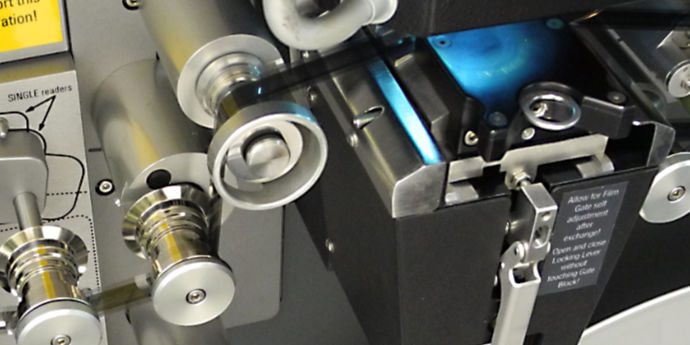Let’s put some visuals to this idea of stabilising the jitter in the kine scans.
As I mentioned in the last post, the jitter actually comprises three kinds of motion:
- Displacement
- Rotation
- Vertical stretch
The following three diagrams illustrate each kind of motion. To make them clearly visible, the movements in these illustrations are proportionally much larger than in the actual film frames.
For each kind of motion, the little red arrows show the resulting movements of each corner artefact — the white dots which are stable relative to the video raster.

| The frame moves vertically and horizontally but does not rotate. The dimensions of the frame remain constant. Imagine moving a rectangular piece of paper around on a table while keeping it parallel to the table edges. Notice that the red arrows (corner movement vectors) all point in the same direction and are the same length. | The frame rotates about its centre point. The frame dimensions do not change. Imagine the piece of paper pinned to the table with the pin through the centre of the paper. The red arrows point in different directions but are symmetrical around the centre point. | The frame stretches or squashes vertically around its centre point. The height of the frame changes, but not its width. Imagine the paper pinned to the table but it can stretch vertically. The red arrows point up or down and are vertically symmetrical. |
In the next post we’ll look at how we can detect the movements of these corner artefacts — what we are showing as the red arrows in these diagrams. Armed with that data, we can calculate the displacement, rotation and vertical scaling that comprise the jitter. And once we know that, it’s a simple matter to reverse those unwanted movements, which will make the jitter disappear.
The next post will appear in January after the Summer break.
